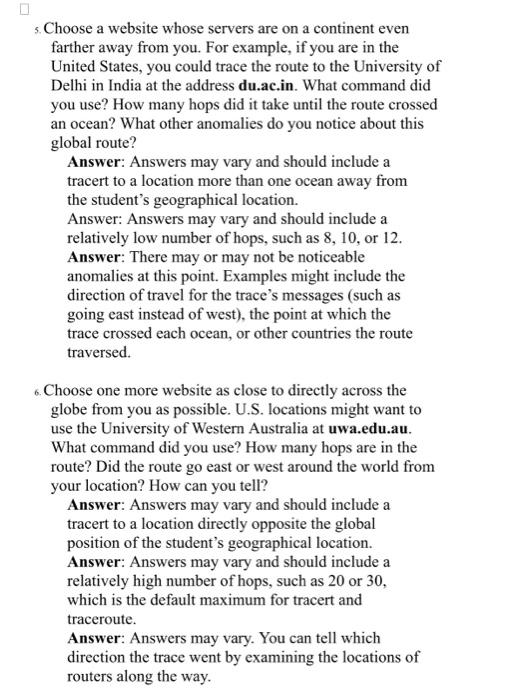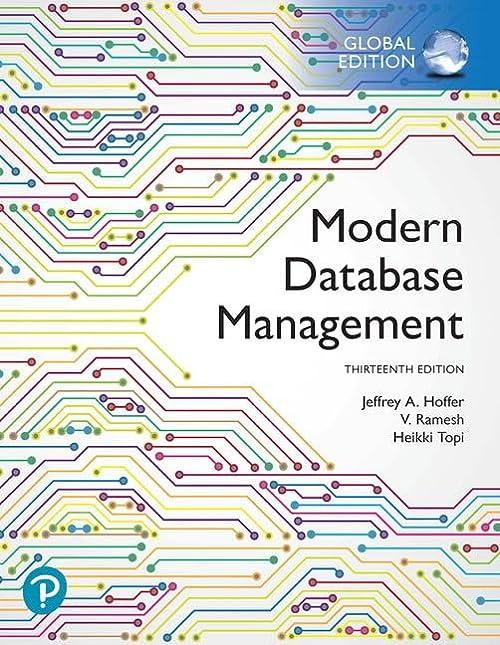cis:145- networking
answer 5 and 6

5. Choose a website whose servers are on a continent even farther away from you. For example, if you are in the United States, you could trace the route to the University of Delhi in India at the address du.ac.in. What command did you use? How many hops did it take until the route crossed an ocean? What other anomalies do you notice about this global route? Answer: Answers may vary and should include a tracert to a location more than one ocean away from the student's geographical location. Answer: Answers may vary and should include a relatively low number of hops, such as 8,10 , or 12 . Answer: There may or may not be noticeable anomalies at this point. Examples might include the direction of travel for the trace's messages (such as going east instead of west), the point at which the trace crossed each ocean, or other countries the route traversed. 6. Choose one more website as close to directly across the globe from you as possible. U.S. locations might want to use the University of Western Australia at uwa.edu.au. What command did you use? How many hops are in the route? Did the route go east or west around the world from your location? How can you tell? Answer: Answers may vary and should include a tracert to a location directly opposite the global position of the student's geographical location. Answer: Answers may vary and should include a relatively high number of hops, such as 20 or 30 , which is the default maximum for tracert and traceroute. Answer: Answers may vary. You can tell which direction the trace went by examining the locations of routers along the way. 5. Choose a website whose servers are on a continent even farther away from you. For example, if you are in the United States, you could trace the route to the University of Delhi in India at the address du.ac.in. What command did you use? How many hops did it take until the route crossed an ocean? What other anomalies do you notice about this global route? Answer: Answers may vary and should include a tracert to a location more than one ocean away from the student's geographical location. Answer: Answers may vary and should include a relatively low number of hops, such as 8,10 , or 12 . Answer: There may or may not be noticeable anomalies at this point. Examples might include the direction of travel for the trace's messages (such as going east instead of west), the point at which the trace crossed each ocean, or other countries the route traversed. 6. Choose one more website as close to directly across the globe from you as possible. U.S. locations might want to use the University of Western Australia at uwa.edu.au. What command did you use? How many hops are in the route? Did the route go east or west around the world from your location? How can you tell? Answer: Answers may vary and should include a tracert to a location directly opposite the global position of the student's geographical location. Answer: Answers may vary and should include a relatively high number of hops, such as 20 or 30 , which is the default maximum for tracert and traceroute. Answer: Answers may vary. You can tell which direction the trace went by examining the locations of routers along the way








